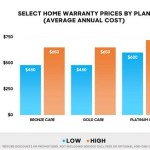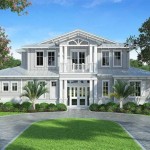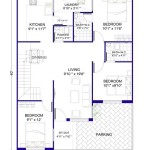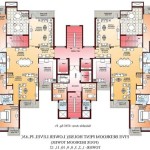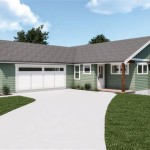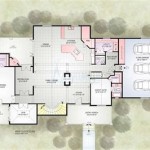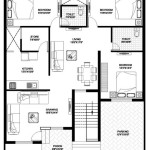Inexpensive to Build Home Plans: Navigating Affordable Home Construction
The aspiration of homeownership remains a significant goal for many individuals and families. However, the rising costs associated with construction and materials often present a substantial barrier. Inexpensive to build home plans offer a potential solution by prioritizing cost-effectiveness without necessarily sacrificing quality or design. This approach requires careful planning, efficient resource utilization, and a strategic selection of materials and construction methods.
This article explores the key considerations involved in selecting and implementing inexpensive to build home plans. It will delve into various design approaches, material choices, and construction techniques that can contribute to reducing overall project costs. Furthermore, it will highlight the importance of budgeting, securing accurate cost estimates, and navigating potential challenges throughout the building process. Ultimately, the aim is to provide a comprehensive overview of how individuals can pursue their homeownership dreams while adhering to budgetary limitations.
Prioritizing Simple and Efficient Designs
One of the most crucial factors in achieving cost-effectiveness in home construction is the adoption of simple and efficient designs. Complex architectural features, intricate rooflines, and non-standard dimensions can significantly increase material waste, labor costs, and construction time. Opting for straightforward designs, such as rectangular or square shapes with minimal ornamentation, can substantially reduce these expenses.
Open floor plans are often associated with cost savings due to reduced interior wall construction and improved natural light distribution. This design strategy minimizes the need for extensive partitioning and can create a more spacious and functional living environment. Moreover, careful consideration of window and door placement can further optimize natural light and ventilation, potentially reducing reliance on artificial lighting and mechanical cooling systems.
Efficient use of space is paramount in inexpensive home design. Minimizing hallways and wasted areas can maximize the usable square footage within a given footprint. Designing for multi-functional spaces, such as a home office that doubles as a guest room, can also contribute to overall cost savings. Incorporating built-in storage solutions can further optimize space utilization and reduce the need for expensive freestanding furniture.
The orientation of the house on the lot is also a critical aspect of efficient design. Proper orientation can maximize solar gain during the winter months and minimize heat exposure during the summer, reducing energy consumption for heating and cooling. Consideration of prevailing winds can also optimize natural ventilation, further contributing to energy efficiency and cost savings. Engaging with a knowledgeable architect or designer who understands passive solar design principles is highly recommended.
Selecting Cost-Effective Building Materials
The choice of building materials has a significant impact on the overall cost of a home. Selecting readily available and locally sourced materials can often result in substantial savings. Exploring alternative materials, such as engineered wood products, recycled materials, and concrete alternatives, can also contribute to cost reduction without compromising structural integrity or aesthetic appeal.
Engineered wood products, such as oriented strand board (OSB) and laminated veneer lumber (LVL), offer a cost-effective alternative to solid lumber in many applications. These materials are typically more uniform in quality and less prone to warping or twisting, reducing waste and improving construction efficiency. Furthermore, engineered wood products are often manufactured from sustainably managed forests, making them an environmentally responsible choice.
Concrete is a versatile and durable material that can be relatively inexpensive, especially when sourced locally. Concrete slabs are a popular choice for foundations and flooring, providing a stable and low-maintenance base. Concrete block construction can also be a cost-effective option for walls, particularly in areas where skilled masonry labor is readily available. Exploring alternative concrete mixtures, such as those incorporating recycled aggregates or supplementary cementitious materials, can further reduce material costs and environmental impact.
Siding options can also significantly impact the cost of a home. Vinyl siding is generally one of the most affordable choices, offering durability and low maintenance. However, other options, such as wood siding or fiber cement siding, may offer a more aesthetically pleasing appearance. Careful consideration of long-term maintenance costs and durability is essential when selecting siding materials.
Interior finishes, such as flooring, cabinetry, and countertops, also offer opportunities for cost savings. Opting for budget-friendly flooring materials, such as laminate or vinyl plank, can significantly reduce costs compared to hardwood or tile. Stock cabinetry and countertops are generally less expensive than custom designs. Exploring salvaged or reclaimed materials can also be a sustainable and cost-effective way to add unique character to a home.
Optimizing Construction Techniques and Labor Costs
Efficient construction techniques can significantly reduce labor costs and overall project timelines. Simplifying building processes, utilizing pre-fabricated components, and employing skilled labor are crucial elements in achieving cost-effectiveness. Proper planning and coordination are essential to ensure that materials are readily available when needed, minimizing delays and reducing labor expenses.
Prefabricated components, such as wall panels, roof trusses, and modular sections, can significantly accelerate the construction process. These components are manufactured in a controlled factory environment, ensuring high quality and precision. Prefabrication reduces on-site labor requirements and minimizes material waste, contributing to overall cost savings. However, it is essential to carefully plan and coordinate the delivery and installation of prefabricated components to avoid delays and complications.
Owner-builder options, where the homeowner acts as the general contractor and manages the construction process, can potentially reduce costs. However, this approach requires a significant commitment of time and effort, as well as a thorough understanding of construction principles and project management skills. If considering an owner-builder approach, seeking guidance from experienced builders or consultants is highly recommended.
Careful negotiation with subcontractors is essential for controlling labor costs. Obtaining multiple bids from qualified contractors and thoroughly reviewing their proposals can help ensure that the project is completed within budget. Clear communication and well-defined contracts are crucial for avoiding misunderstandings and disputes. Regular site visits and inspections are also recommended to ensure that the work is being performed according to specifications and building codes.
Investing in energy-efficient construction techniques can result in long-term cost savings. Proper insulation, airtight construction, and high-performance windows and doors can significantly reduce energy consumption for heating and cooling. While these features may involve a slightly higher initial investment, the resulting energy savings can quickly offset the additional costs over the lifespan of the home. Furthermore, incorporating renewable energy technologies, such as solar panels or geothermal systems, can further reduce energy expenses and enhance the sustainability of the home.
In addition to the core structure, landscaping and exterior finishes can also contribute to overall project costs. Opting for low-maintenance landscaping options, such as drought-resistant plants and gravel pathways, can reduce water consumption and maintenance expenses. Limiting the extent of paved areas can also reduce costs and minimize stormwater runoff. Selecting durable and low-maintenance exterior finishes can help ensure that the home remains aesthetically pleasing and structurally sound for many years to come.
Securing the necessary permits and approvals is a critical step in the home construction process. Familiarizing oneself with local building codes and regulations is essential to avoid costly delays and potential fines. Engaging with local building officials early in the planning process can help ensure that the project complies with all applicable requirements. Furthermore, obtaining all necessary insurance coverage, including builder's risk insurance and liability insurance, is crucial for protecting against potential losses or damages during construction.
Maintaining accurate and up-to-date records is essential for managing project costs and tracking progress. Keeping track of all expenses, including materials, labor, permits, and fees, can help identify potential cost overruns and inform decision-making. Regularly reviewing the budget and comparing actual expenses to estimated costs can help ensure that the project remains on track. Thorough documentation of all construction activities, including photographs and written records, can also be valuable for future reference and potential warranty claims.
Building a home on a budget requires careful planning, strategic decision-making, and efficient resource utilization. By prioritizing simple and efficient designs, selecting cost-effective building materials, optimizing construction techniques, and managing project costs effectively, individuals can realize their dreams of homeownership without exceeding their financial constraints.
Est House Plans To Build Simple With Style Blog Eplans Com

Affordable House Plans Our Est To Build Blog Homeplans Com

Affordable House Plans Our Est To Build Blog Homeplans Com

Building On The Affordable House Plans Of 2024 Houseplans Blog Com

Building On The Affordable House Plans Of 2024 Houseplans Blog Com

Est House Plans To Build Simple With Style Blog Eplans Com

Affordable House Plans Our Est To Build Blog Homeplans Com

Est House Plans To Build Simple With Style Blog Eplans Com

Affordable Home Plan Ch3

Building On The Affordable House Plans Of 2024 Houseplans Blog Com

